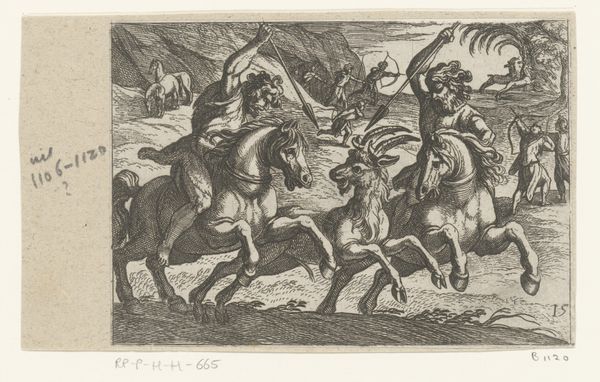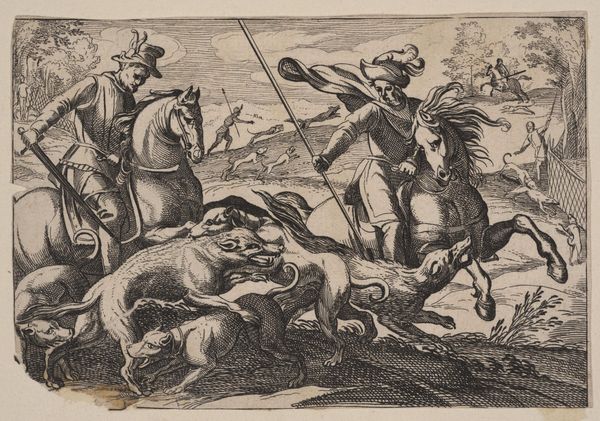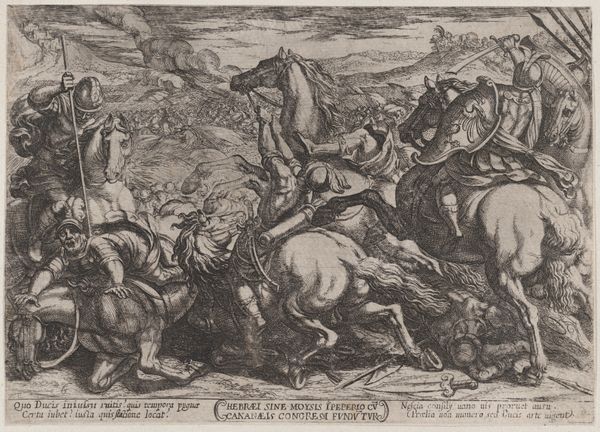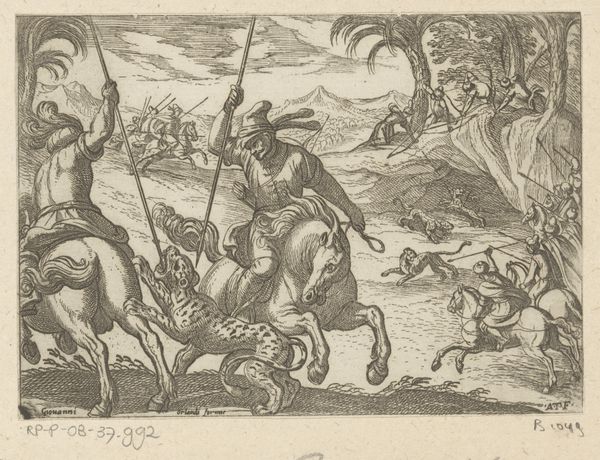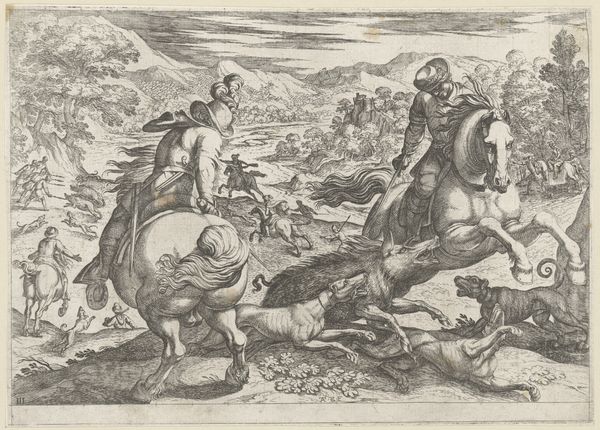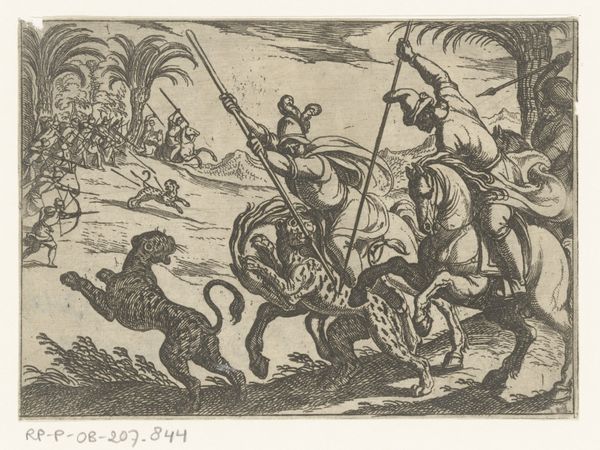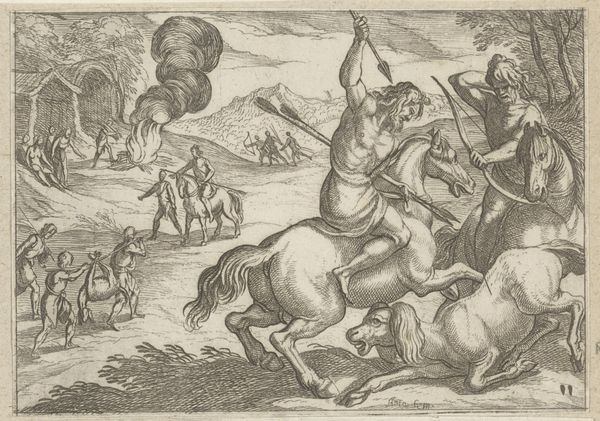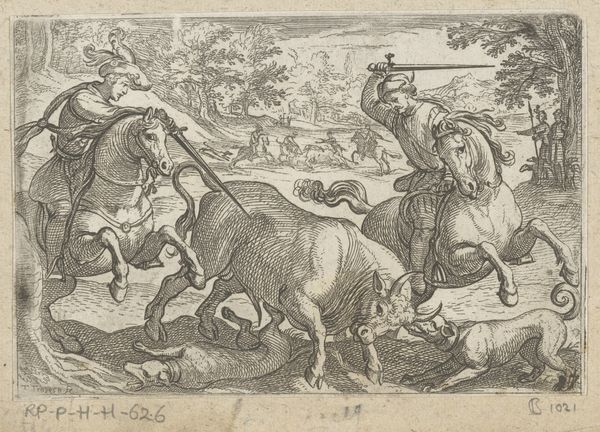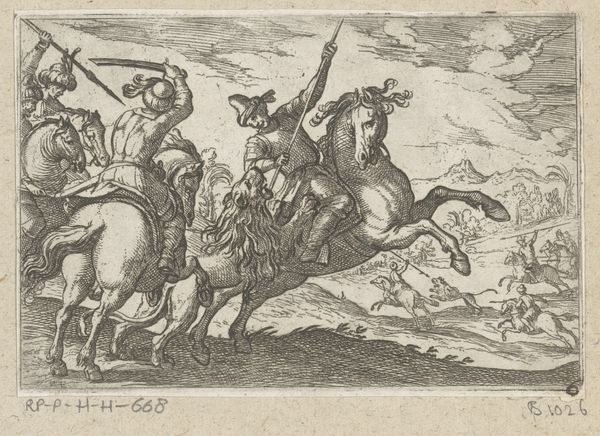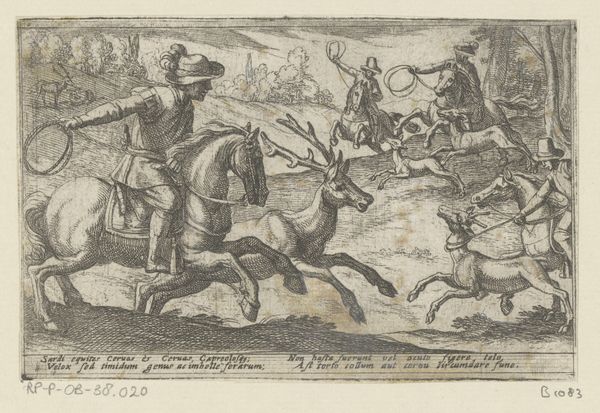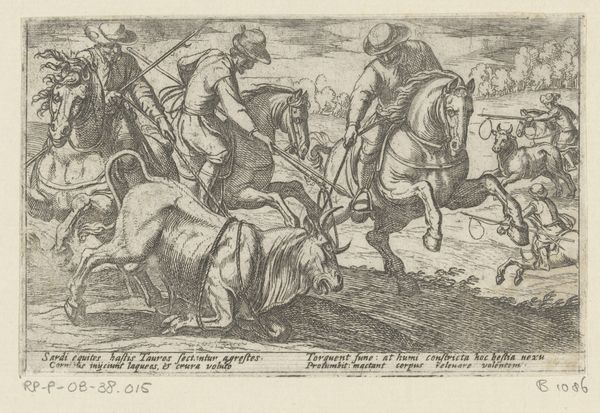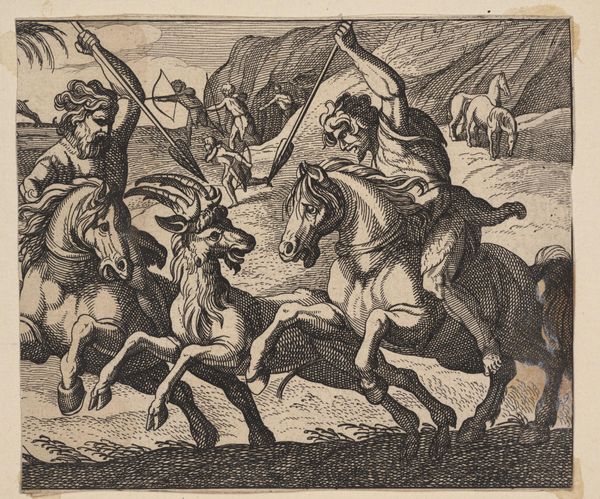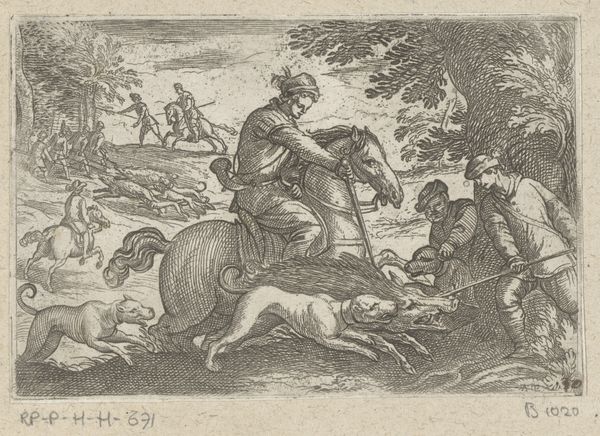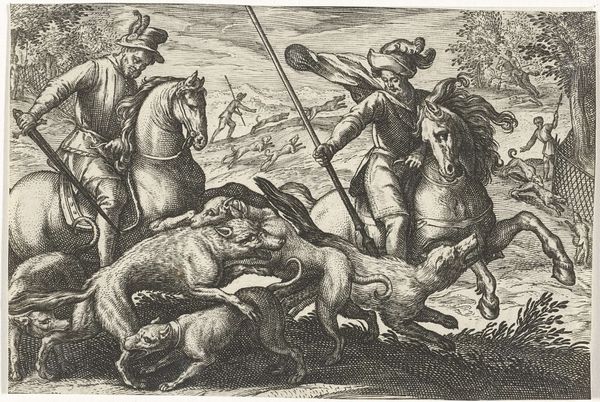
drawing, print, metal, etching, ink
#
drawing
# print
#
metal
#
etching
#
landscape
#
mannerism
#
figuration
#
ink
#
genre-painting
#
history-painting
Dimensions: height 82 mm, width 122 mm
Copyright: Rijks Museum: Open Domain
Antonio Tempesta made this tiny print, Jacht op wolven, sometime around the turn of the 17th century, using a technique called etching. Etching begins with a metal plate covered in a waxy, acid-resistant ground. The artist scratches an image into this ground, exposing the metal beneath. The plate is then submerged in acid, which bites into the exposed lines, creating grooves. Ink is applied, filling the grooves, and the surface is wiped clean. Finally, the plate is pressed onto paper, transferring the ink and creating the print. Look closely, and you can see the fine lines that define the hunters, horses, and the frenzied pack of wolves. The success of the print relies entirely on the etcher's skill. Tempesta has expertly controlled the acid to create a range of tones and textures. The process itself, with its reliance on chemical action, could be seen as an early form of industrial production, democratizing image-making and making it available to a wider audience. It’s a far cry from the unique, hand-painted art of the period, and a hint of the mass-produced world to come.
Comments
No comments
Be the first to comment and join the conversation on the ultimate creative platform.
